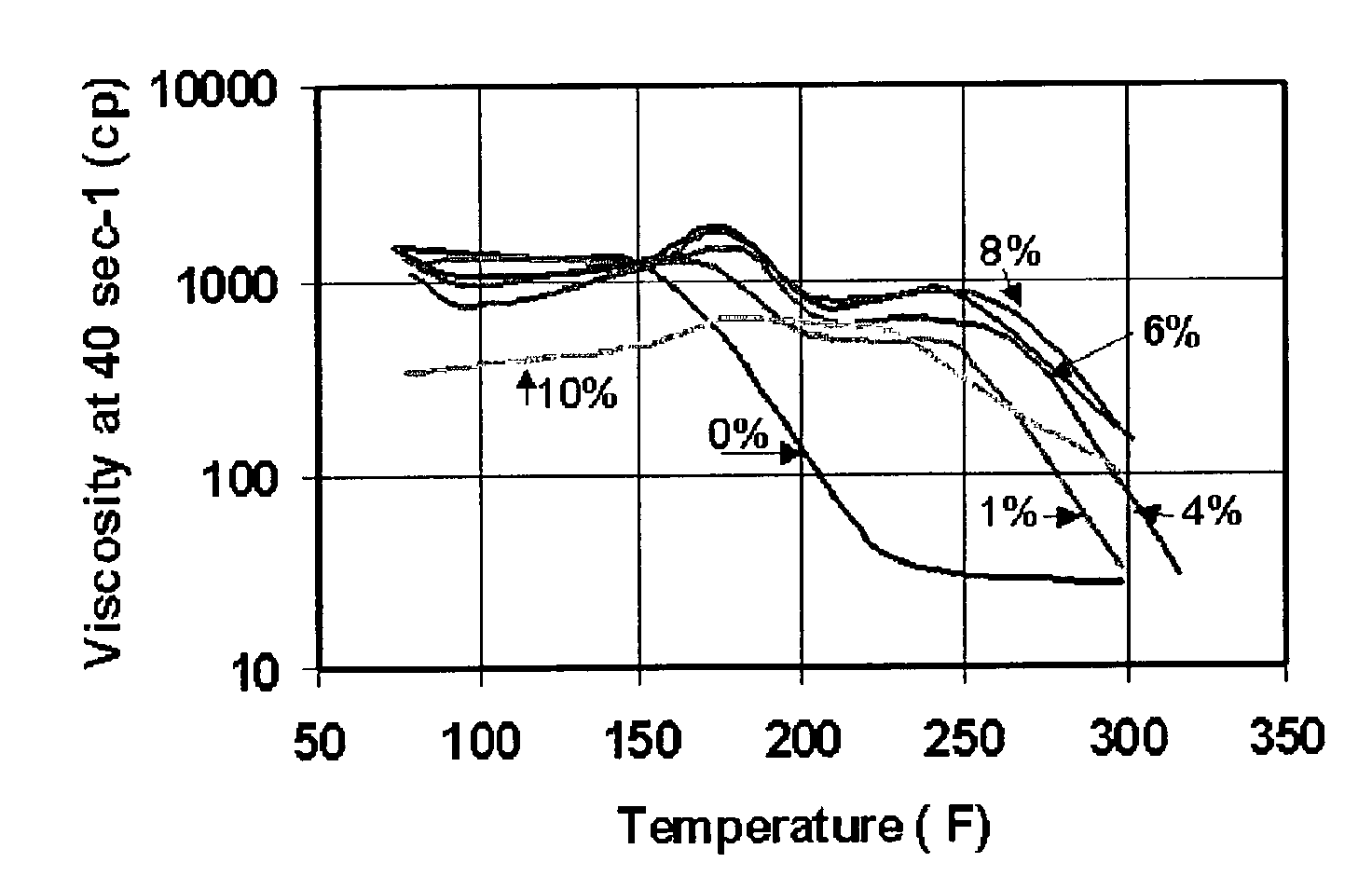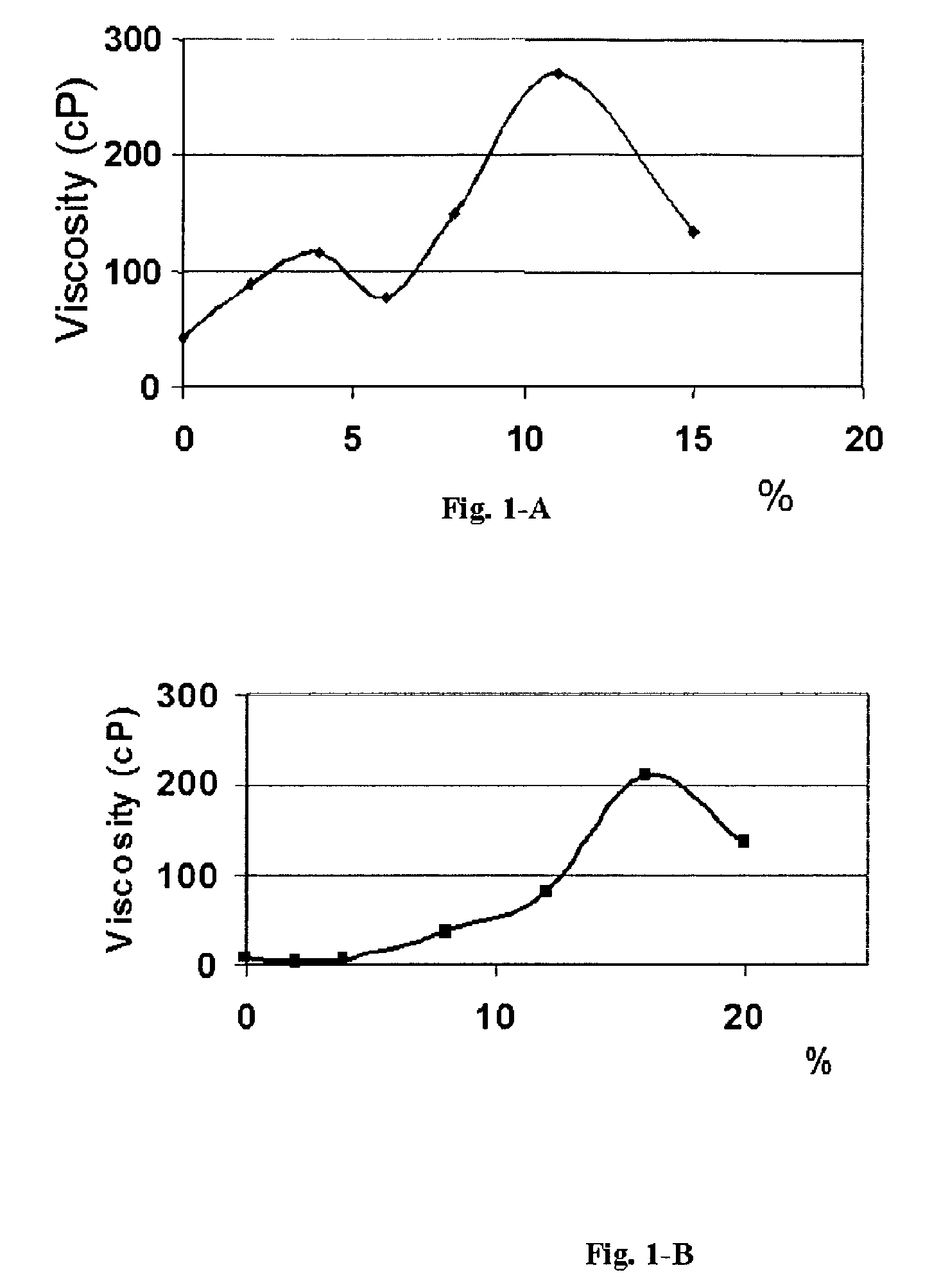Fluid system having controllable reversible viscosity
a technology of fluid system and viscosity, applied in the field of fluid composition, can solve the problems of exacerbated critical character of fluid placement, poor permeability of well, and failure to remove the most important damag
- Summary
- Abstract
- Description
- Claims
- Application Information
AI Technical Summary
Benefits of technology
Problems solved by technology
Method used
Image
Examples
Embodiment Construction
[0033]The composition of the present invention are erucylamidopropyl betaine, an amphoteric surfactant having the general formula:
[0034]
[0035]The viscosity development of a solution comprising erucylamidopropyl betaine during acid spent is illustrated FIGS. 1A and 1B. The test in FIG. 1A was performed at room temperature, with a solution comprising 15% HCl and 3wt % of erucylamidopropyl betaine. For the second test shown FIG. 1B, the solution comprised 20% HCl and 3wt % of erucylamidopropyl betaine. To be noted that in both figures, the X-axis is the percentage of HCl spent, starting from 15% (FIG. 1A) or 20% (FIG. 1-B). In other words, in FIG. 1B, 8% shown in graph indicates there is still 12% HCl in the solution). The viscosity was measured at a shear rate of 170 s−1. As soon as the spending starts, the viscosity increases. To be noted that in practice, the gel is later broken by the hydrocarbons of the subterranean formation.
[0036]FIG. 2-A shows the viscosity (using a logarithm s...
PUM
| Property | Measurement | Unit |
|---|---|---|
| Temperature | aaaaa | aaaaa |
| Temperature | aaaaa | aaaaa |
| Fraction | aaaaa | aaaaa |
Abstract
Description
Claims
Application Information
 Login to View More
Login to View More - R&D
- Intellectual Property
- Life Sciences
- Materials
- Tech Scout
- Unparalleled Data Quality
- Higher Quality Content
- 60% Fewer Hallucinations
Browse by: Latest US Patents, China's latest patents, Technical Efficacy Thesaurus, Application Domain, Technology Topic, Popular Technical Reports.
© 2025 PatSnap. All rights reserved.Legal|Privacy policy|Modern Slavery Act Transparency Statement|Sitemap|About US| Contact US: help@patsnap.com



